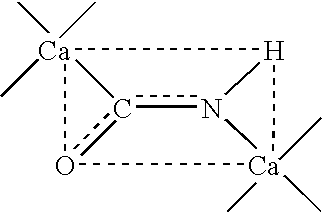[0018] The present invention provides for modified forms of FIX, in which the immune characteristic is modified by means of reduced or removed numbers of potential T-cell epitopes.
[0077] It is particularly useful to establish T-cell lines of oligoclonal cultures from individuals in whom previous therapeutic replacement therapy has been initiated to and in whom the replacement therapy has resulted in the induction of an immune response to the therapeutic
protein. Under this scheme it would be particularly desired to
exploit PBMC samples from this class of so called "inhibitor patients" as it could be expected that the epitope map of the the
Factor IX protein defined by the T-cell
repertoire of a significant number of these individuals will be representative of the most prevalent
peptide epitopes that are capable of presentation in the in vivo context. In this sense, PBMC from patients in whom there is a previously demonstrated immune response constitute the products of an in vivo priming step and given that the use of PBMC cell lines from such individuals is in principle an immunological
in vitro recall
assay, it further provides the practical benefit of there being the capacity for a much larger magnitude of proliferative response to any given stimulating
peptide or protein. This reduces the technical challenge of conducting a proliferation measurement and in such a situation may give the opportunity for definition of a possible hierarchy of
immunodominant epitopes as is the case for FIX which is demonstrated herein computationally to harbour multiple
MHC class II peptide ligands and therefore multiple or complex (i.e. overlapping) T-cell epitopes.
[0096] According to another aspect of the present invention, T-cell epitopes can be predicted with greater accuracy by the use of a more sophisticated computational method which takes into account the interactions of peptides with models of
MHC Class II alleles. The computational prediction of T-cell epitopes present within
a peptide according to this particular aspect contemplates the construction of models of at least 42
MHC Class II alleles based upon the structures of all known SIC Class II molecules and a method for the use of these models in the computational identification of T-cell epitopes, the construction of libraries of peptide backbones for each model in order to allow for the known variability in relative
peptide backbone alpha carbon (Ca) positions, the construction of libraries of amino-acid
side chain conformations for each backbone dock with each model for each of the 20 amino-acid alternatives at positions critical for the interaction between peptide and
MHC Class II molecule, and the use of these libraries of backbones and side-chain conformations in conjunction with a scoring function to select the optimum backbone and side-chain conformation for a particular peptide docked with a articular
MHC Class II molecule and the derivation of a binding
score from this interaction.
[0098] The
present method differs significantly from other computational methods which use libraries of experimentally derived binding data of each amino-acid alternative at each position in the binding groove for a small set of MHC Class II molecules (Marshall K. W., et al., Biomed. Pept. Proteins Nucleic Acids, 1(3):157-162) (1995) or yet other computational methods which use similar experimental binding data in order to define the binding characteristics of particular types of binding pockets within the groove, again using a relatively small subset of MHC Class II molecules, and then `mixing and matching` pocket types from this pocket
library to artificially create further `virtual` MHC Class II molecules (Sturniolo T., et al., Nat. Biotech, 17(6): 555-561 (1999). Both prior methods suffer the major
disadvantage that, due to the complexity of the assays and the need to synthesize large numbers of peptide variants, only a small number of MHC Class II molecules can be experimentally scanned. Therefore the first prior method can only make predictions for a small number of MHC Class II molecules. The second prior method also makes the assumption that a pocket lined with similar amino-acids in one molecule will have the same binding characteristics when in the context of a different Class II
allele and suffers further disadvantages in that only those MHC Class II molecules can be `virtually` created which contain pockets contained within the pocket
library. Using the modeling approach described herein, the structure of any number and type of MHC Class II molecules can be deduced, therefore alleles can be specifically selected to be representative of the global
population. In addition, the number of MHC Class II molecules scanned can be increased by making further models further than having to generate additional data via complex experimentation.
[0152] As described above, the scoring function is applied to data extracted from the
database of side-chain conformations, atom identities, and interatomic distances. For the purposes of the present description, the number of MHC Class II molecules included in this
database is 42 models plus four solved structures. It should be apparent from the above descriptions that the modular nature of the construction of the computational method of the present invention means that new models can simply be added and scanned with the
peptide backbone library and side-chain conformational
search function to create additional data sets which can be processed by the peptide scoring function as described above. This allows for the
repertoire of scanned MHC Class II molecules to easily be increased, or structures and associated data to be replaced if data are available to create more accurate models of the existing alleles.
 Login to View More
Login to View More 

